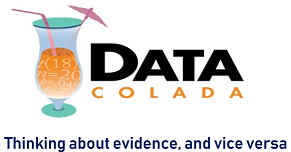Most scientific studies document a pattern for which the authors provide an explanation. The job of readers and reviewers is to examine whether that pattern is better explained by alternative explanations. When alternative explanations are offered, it is common for authors to acknowledge that although, yes, each study has potential confounds, no single alternative explanation…
Author: Uri Simonsohn
[29] Help! Someone Thinks I p-hacked
It has become more common to publicly speculate, upon noticing a paper with unusual analyses, that a reported finding was obtained via p-hacking. This post discusses how authors can persuasively respond to such speculations. Examples of public speculation of p-hacking Example 1. A Slate.com post by Andrew Gelman suspected p-hacking in a paper that collected…
[28] Confidence Intervals Don't Change How We Think about Data
Some journals are thinking of discouraging authors from reporting p-values and encouraging or even requiring them to report confidence intervals instead. Would our inferences be better, or even just different, if we reported confidence intervals instead of p-values? One possibility is that researchers become less obsessed with the arbitrary significant/not-significant dichotomy. We start paying more…
[24] P-curve vs. Excessive Significance Test
In this post I use data from the Many-Labs replication project to contrast the (pointless) inferences one arrives at using the Excessive Significant Test, with the (critically important) inferences one arrives at with p-curve. The many-labs project is a collaboration of 36 labs around the world, each running a replication of 13 published effects in…
[23] Ceiling Effects and Replications
A recent failure to replicate led to an attention-grabbing debate in psychology. As you may expect from university professors, some of it involved data. As you may not expect from university professors, much of it involved saying mean things that would get a child sent to the principal's office (.pdf). The hostility in the debate has obscured an interesting…
[20] We cannot afford to study effect size in the lab
Methods people often say – in textbooks, task forces, papers, editorials, over coffee, in their sleep – that we should focus more on estimating effect sizes rather than testing for significance. I am kind of a methods person, and I am kind of going to say the opposite. Only kind of the opposite because it…
[19] Fake Data: Mendel vs. Stapel
Diederik Stapel, Dirk Smeesters, and Lawrence Sanna published psychology papers with fake data. They each faked in their own idiosyncratic way, nevertheless, their data do share something in common. Real data are noisy. Theirs aren't. Gregor Mendel's data also lack noise (yes, famous peas-experimenter Mendel). Moreover, in a mathematical sense, his data are just as…
[17] No-way Interactions
This post shares a shocking and counterintuitive fact about studies looking at interactions where effects are predicted to get smaller (attenuated interactions). I needed a working example and went with Fritz Strack et al.’s (1988, .html) famous paper [933 Google cites], in which participants rated cartoons as funnier if they saw them while holding a…
[15] Citing Prospect Theory
Kahneman and Tversky's (1979) Prospect Theory (.html), with its 9,206 citations, is the most cited article in Econometrica, the prestigious journal in which it appeared. In fact, it is more cited than any article published in any economics journal. [1] Let's break it down by year. To be clear, this figure shows that just in 2013, Prospect Theory got about…
[13] Posterior-Hacking
Many believe that while p-hacking invalidates p-values, it does not invalidate Bayesian inference. Many are wrong. This blog post presents two examples from my new “Posterior-Hacking” (SSRN) paper showing selective reporting invalidates Bayesian inference as much as it invalidates p-values. Example 1. Chronological Rejuvenation experiment In “False-Positive Psychology" (SSRN), Joe, Leif and I run experiments to demonstrate how easy…
